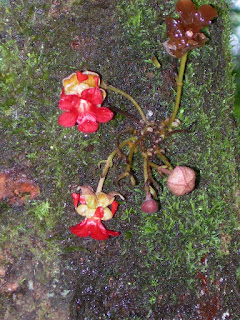This is not the first time the Phytophactor has attempted to elucidate the nature of the BA and BS degrees for you. The B stands for baccalaureate after baccus laureus the fruit of the laurel (Laurus nobilis) and source of bay leaves. The Greeks awarded champions wreaths of laurel leaves, their crowning acheivement, and so having labored away in the vinyards of academe students obtain a baccalaureate degree to certify their achievement. In the early days of the academe it was only single males who earned such degrees so they became nicknamed bachelor's degrees, a sexist error that sadly even our great institute of higher learning perpetuates.
Now the Phactor is a tolerant person, but if you don't know the name of your degree, or you can't spell it, do you deserve that degree? Duh! The Phactor is the fellow who always took a potted bay laurel to graduation.
A similar question was put to me once, almost 35 years ago, and yes, the Phactor knew what PhD stood for. Now please understand that as part of a discussion of herbs and spices in my economic botany class, not only was this all explained, but the students were told that Phactor did not think anyone was deserving a degree who did not know its name and could not spell it. So how did my aspiring academics, mostly seniors, do?
5 did not answer the question at all; it was an option, but since they chose other questions it indicates they really did not know because some of the other answers they gave were pretty awful.
2 said Bachelor's although the error of this was part of the lecture.
The remaining 16 knew the answer, but only 3 could spell it correctly. Looks like only 13% pass my acid test.
Here are the 11 permutations (one turned up 3 times): baccalorate, bachalaureat, bacheloriate (an amusing fusion), bacclaureate, bachloretti (sort of sounds Italian), bacchalaurate (the favorite), bacculerote, bacalureate, baccaleurate, baccaloriate (nicely phonetic), bacchelaureatte.
Won't my dean and provost be amused?
Change of address
5 months ago in Variety of Life
























